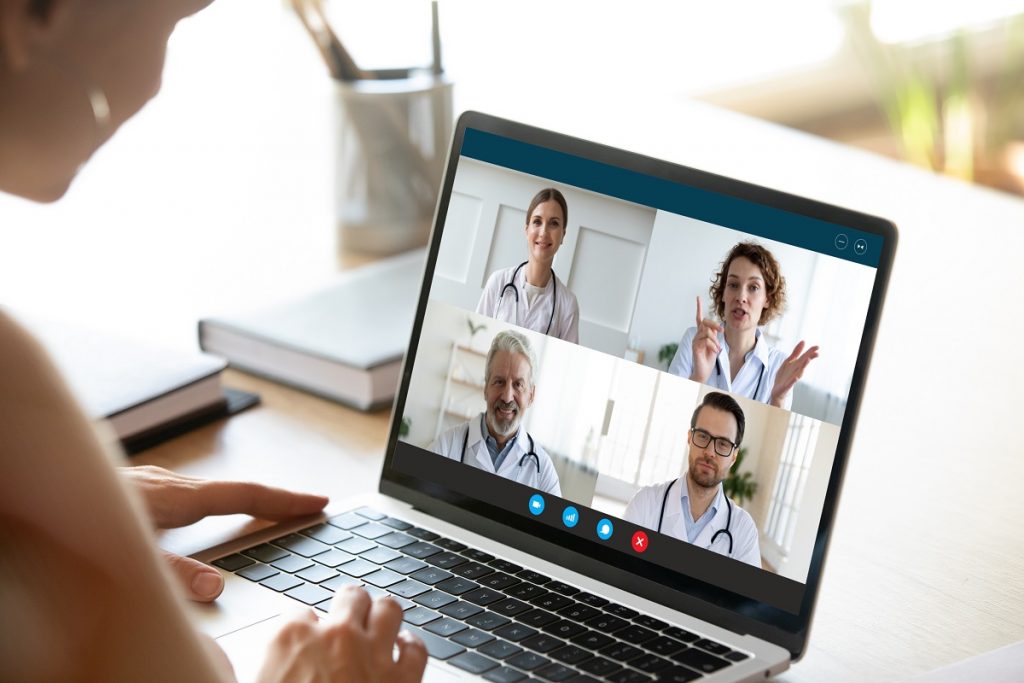At times this year, Covid-19 has demanded that we work differently and create a need for safe and socially distanced medical care and advice. We’ve seen patients who once walked-in to clinics now logging on to teleconsultations and video telehealth platforms have been there to provide that essential link to connect clinicians and patients.
As with any kind of technology, the trick is to use the right tool, in the right situation. Teleconsultations won’t be right for everyone which is why it’s crucially important to choose the most appropriate patients, those who are at the right stage of their journey and for whom it fits their clinical condition. There’s also a need to make sure that patients are comfortable accessing the technology and they have the privacy they need for themselves.
Using the right tool in the right situation
Over the last year or so, teleconsultations have been one of the key tools that healthcare providers have reached for. Not only to continue providing patients with the best possible care but also to even out the flow of patients physically attending clinics and appointments at any one time. Alternating between tele clinics and face-to-face appointments has created a blended approach that enables Trusts like us, to manage the estate and most importantly keep all of our patients safe.
By offering teleconsultations through the Refero platform, we’ve been able to continue providing key services to patients using our Cancer Drains Outreach and Stroke Review Services.
For patients in our drains outreach programme, wounds can dramatically change in a very short space of time and can be complex to care for. Teleconsultations have allowed us to get patients home within a day or so of any procedures, safe in the knowledge that they can talk to their specialist nurse every single day. This means that patients only have to come back into hospital if they really have to which allows them more time at home recovering and being in a comfortable environment.
The effects of a stroke can be incredibly debilitating and before the introduction of teleconsultations, some of our patients would arrive for their appointments exhausted after having travelled on two or three buses to get to us. In these instances, it makes it difficult to gain a good reflection of that patient’s clinical progress – whereas seeing them function in their home via a screen works well and even has its own advantages. Video consultations enable clinicians to assess nonverbal cues and ascertain how a person is coping at home, something that is difficult to grasp in a clinical setting where you can only really assess what physical state the patient is in.
Multiple participants
Seeing patients in their own environment is incredibly beneficial and as our telehealth programme has expanded, so has the functionality we have to offer. One of the new features we are harnessing from Refero is multi-party video conferencing, this allows more people to meet virtually than just the patient and clinician. It gives family members and advocates the opportunity to join consultations if needed, as well as occupational health and therapies’ teams. For patients from mixed nationalities, language interpreters are able to support them by joining calls. But it isn’t just patients who are benefitting from multi-party video consultations during these unusual times, the technology is also supporting junior doctors. With less patients attending physical clinics, this has created an opportunity for them to train and ‘see’ patients safely whilst adhering to social distancing guidelines.
An integrated approach
While telehealth is changing the way patients manage their care and share information with clinicians – it’s also important that healthcare providers marry this with an integrated approach. By integrating our telehealth platform with the Trust’s EPR we’ve been able to capture upcoming appointments, attendance, and outcomes. This is really the last piece of the jigsaw puzzle and provides assurance that patients are staying on their pathways, and we have visibility of them throughout their entire journey.
Of course, telehealth is not right for everyone. It’s important to exercise good quality clinical judgement when it comes to introducing new technologies, however the pandemic has boosted the acceptance of teleconsultations for both patients and clinicians. Going forward digital technologies will have a key role to play across the continuum of care, with blended approaches and support seen across secondary care.
By Rowan Pritchard Jones, Medical Director at St Helens and Knowsley Teaching Hospitals NHS Trust

